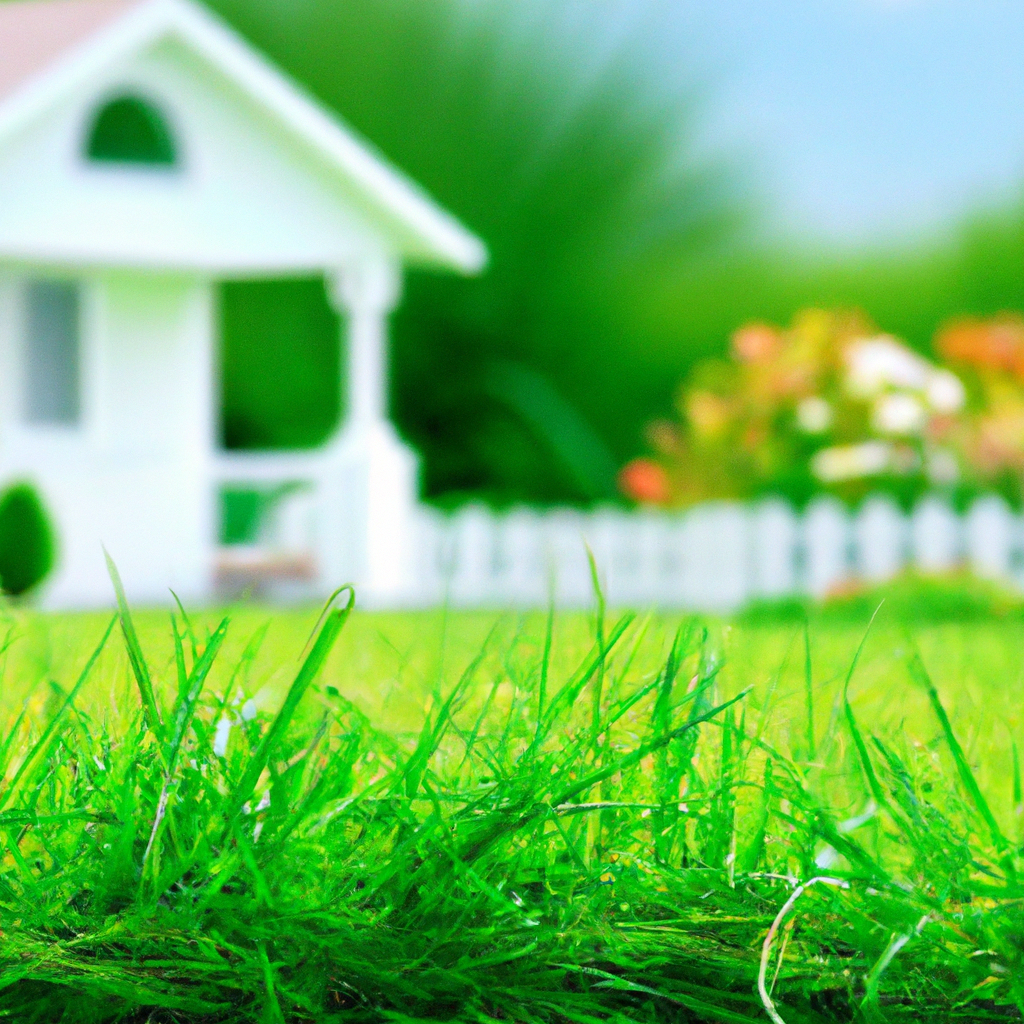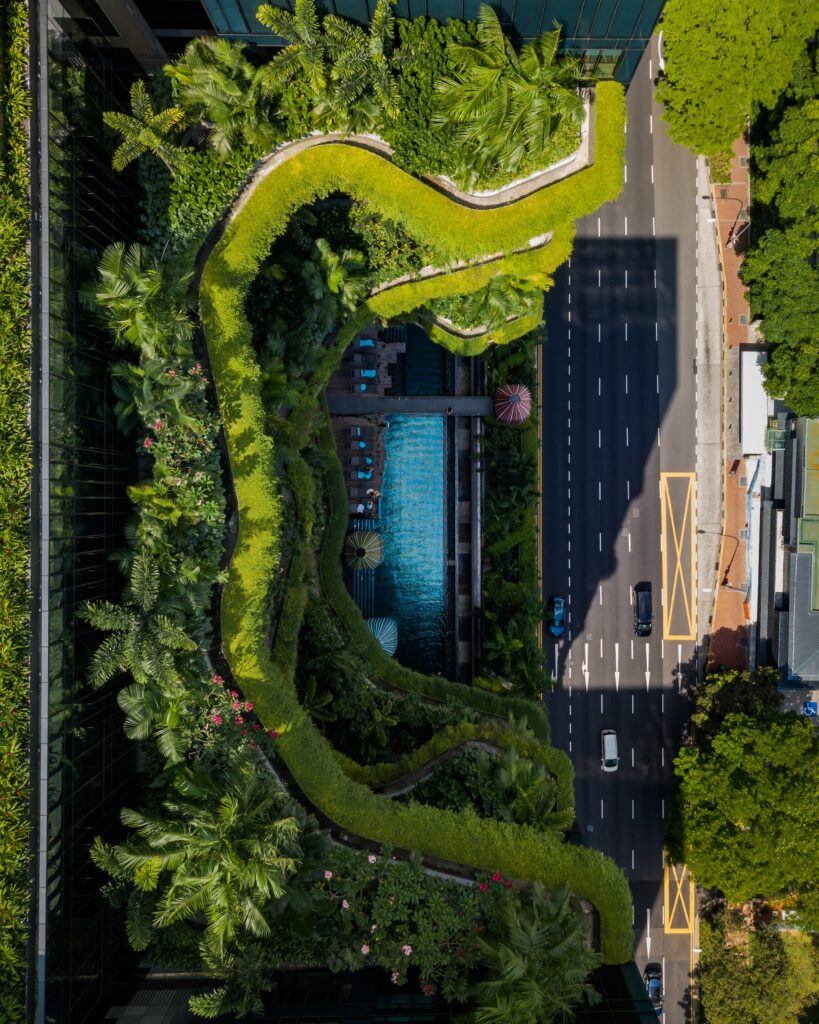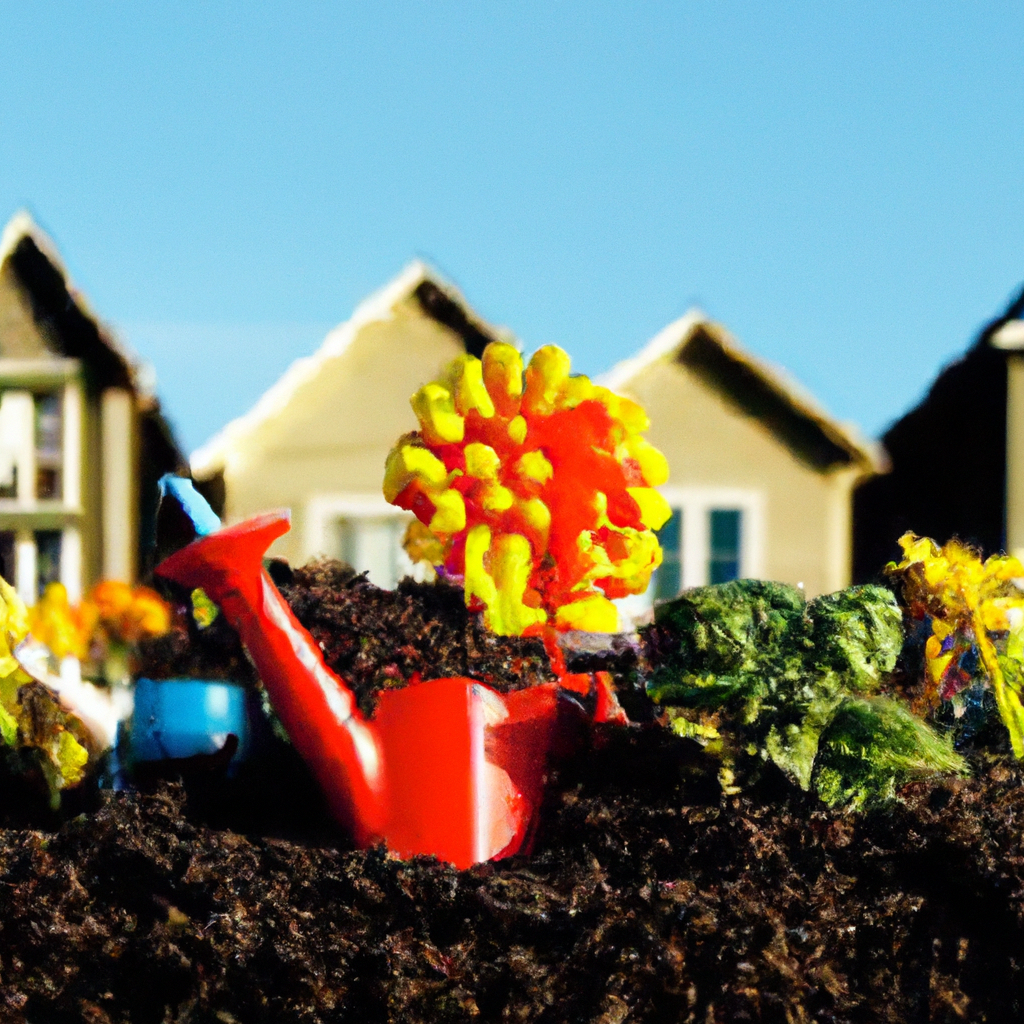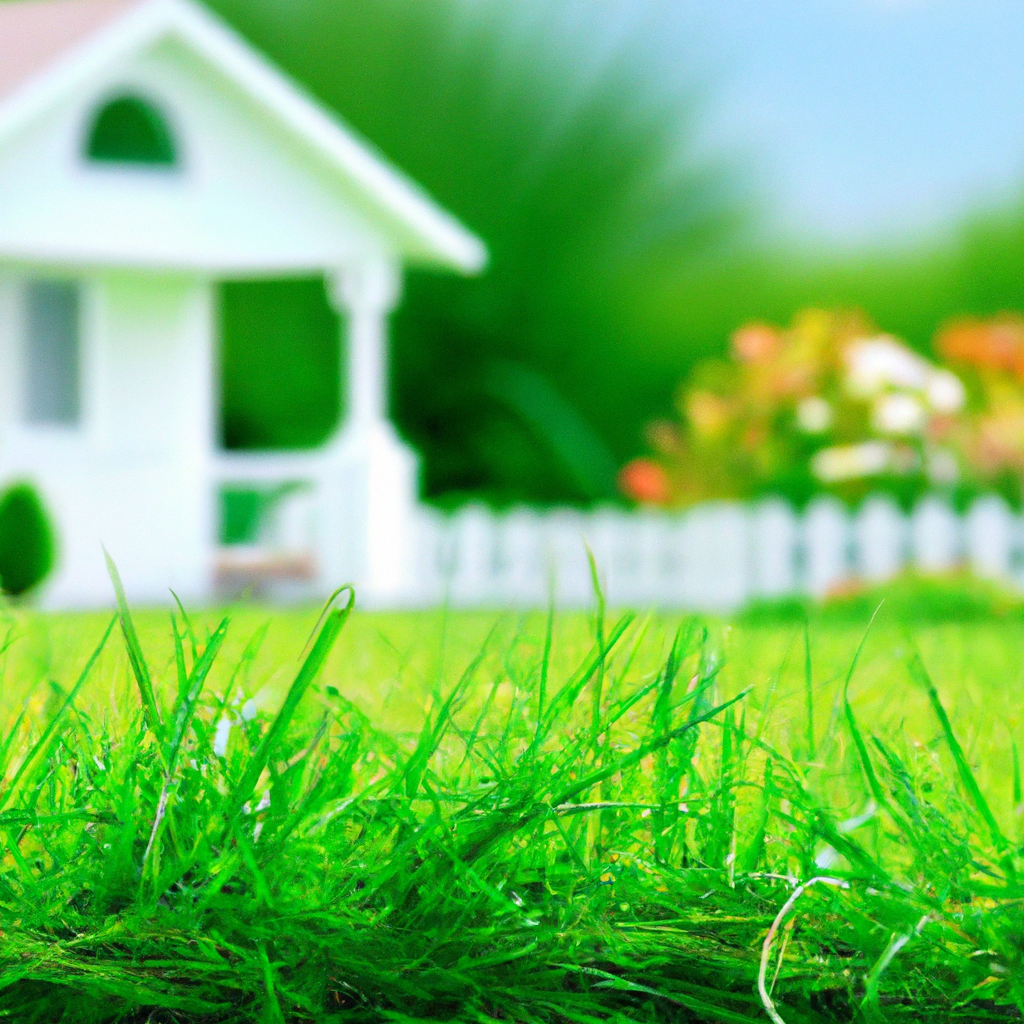
Looking for ways to make your home more eco-friendly? Look no further! In this article, we’ll explore some simple yet effective tips to help you reduce your carbon footprint and create a more sustainable living space. From incorporating energy-efficient appliances to utilizing natural materials and optimizing your home’s insulation, we’ll cover it all. So if you’re ready to make a positive impact on the environment without compromising on style and comfort, keep on reading!

Energy Efficiency
Insulation
When it comes to making your home more eco-friendly, one of the first areas to focus on is insulation. Proper insulation is crucial for maintaining the temperature inside your home and reducing energy waste. By ensuring that your walls, attic, and floors are well insulated, you can prevent heat loss during the colder months and keep your home cooler in the summer. This means your heating and cooling systems won’t have to work as hard, resulting in both energy and cost savings.
Windows and Doors
Another important aspect of energy efficiency is the quality of your windows and doors. Leaky windows and doors can allow drafts to enter, causing your heating and cooling systems to work overtime. Upgrading to energy-efficient windows and investing in weatherstripping can significantly reduce energy loss. Look for windows and doors with a high energy efficiency rating to ensure you’re optimizing your home’s energy consumption.
Appliances and Electronics
Your choice of appliances and electronics can also affect your home’s energy efficiency. When purchasing new appliances, look for those with the ENERGY STAR certification. These appliances are designed to use less energy and are more environmentally friendly. Similarly, be mindful of electronics that are left on standby mode, as they can still consume energy. Consider using smart power strips that automatically turn off electronics when they’re not in use to further reduce energy wastage.
Lighting
Switching to energy-efficient lighting options is a simple yet effective way to make your home more eco-friendly. Replace traditional incandescent light bulbs with LED or CFL bulbs, as they use significantly less energy and have a longer lifespan. Additionally, make it a habit to turn off lights in unoccupied rooms to save even more energy. Consider installing motion-sensor lighting in areas where lights are often left on unintentionally, such as hallways or bathrooms.
Renewable Energy Sources
To further reduce your carbon footprint and make your home more sustainable, consider utilizing renewable energy sources. Solar panels have become increasingly popular and accessible, allowing homeowners to generate their own electricity and reduce reliance on fossil fuels. Additionally, installing a small wind turbine or a geothermal system can also help power your home using renewable resources. While the initial investment may be significant, the long-term cost savings and environmental benefits make it a worthwhile consideration.
Water Conservation
Low-Flow Fixtures
Conserving water is essential for an eco-friendly home. One of the easiest ways to achieve this is by installing low-flow fixtures, such as faucets, showerheads, and toilets. These fixtures are designed to reduce water consumption without sacrificing performance. By using less water, you not only contribute to water conservation efforts but also reduce water bills.
Water-Efficient Appliances
In addition to low-flow fixtures, choosing water-efficient appliances can make a significant difference in your water consumption. Look for appliances such as washing machines and dishwashers that have high Water Factor (WF) ratings. These appliances use less water per cycle, helping you save both water and energy. Additionally, consider investing in a water-efficient irrigation system for your outdoor landscaping needs.
Rainwater Harvesting
Harvesting rainwater is an excellent way to reduce your dependency on municipal water sources. By collecting rainwater from your roof and storing it in barrels or tanks, you can use it for various purposes such as watering plants, cleaning, and even for non-potable uses like flushing toilets. This not only conserves water but also helps prevent stormwater runoff, which can pollute local waterways.
Greywater Recycling
Another method of optimizing water usage is through greywater recycling. Greywater refers to gently used water from sources like sinks, showers, and washing machines. By installing a greywater recycling system, you can treat and filter this water for reuse in flushing toilets or irrigation. It provides a sustainable solution to reduce overall water consumption in your home.
Native Landscaping
Choosing native plants for your landscaping can have a significant impact on water conservation. Native plants are adapted to the local climate and require less water, fertilizer, and pesticides compared to exotic species. Their deep root systems also help retain water in the soil, reducing runoff. Additionally, consider incorporating practices such as mulching, which helps retain moisture and minimize evaporation from the soil.
Waste Reduction
Recycling
One of the most well-known methods of waste reduction is recycling. Implementing a recycling system in your home involves separating recyclable materials, such as paper, plastic, glass, and metal, from general waste. Check with your local recycling center to understand the specific guidelines for your area. By recycling, you can minimize the amount of waste sent to the landfill and conserve valuable resources.
Composting
Composting is an effective way to reduce food waste and create nutrient-rich soil for gardening. Instead of throwing organic waste, such as fruit and vegetable scraps, coffee grounds, and yard trimmings, into the trash, create a compost bin or pile in your backyard. The decomposition process converts the organic matter into compost, which can be used to nourish your garden plants. Composting not only reduces waste but also enhances soil health.
Reducing Single-Use Plastics
Single-use plastics contribute significantly to environmental pollution. By making a conscious effort to reduce your consumption of these items, you can make a positive impact. Opt for reusable alternatives, such as reusable water bottles, grocery bags, and food storage containers. When shopping, choose products with minimal or recyclable packaging. These small changes can add up to significant waste reduction over time.
Purchasing Sustainable Products
When shopping for household items, consider purchasing products that are sustainably produced and packaged. Look for certifications such as Fair Trade, Forest Stewardship Council (FSC), or Cradle to Cradle (C2C), which ensure that the products meet specific environmental and social standards. Choose durable products that are designed to last longer, reducing waste from frequent replacements.
Donating or Repurposing Unwanted Items
Instead of throwing away unwanted items, consider donating them to local charities or thrift stores. Many items that you no longer need or want can still be useful to others. Additionally, get creative and repurpose items to give them a new life. A piece of old furniture can be refurbished or transformed into something entirely different. Not only does this reduce waste, but it also adds a unique touch to your home.
Indoor Air Quality
Natural Ventilation
Improving indoor air quality is essential for a healthy and eco-friendly home. One way to achieve this is through natural ventilation. Open windows and doors, especially during pleasant weather, to allow fresh air to circulate. This helps remove stale air and reduces the build-up of pollutants indoors. Installing window screens can also help keep pests out while maintaining good airflow.
Indoor Plants
Adding indoor plants is not only an aesthetically pleasing choice but also a practical one for improving air quality. Plants are natural air purifiers, absorbing carbon dioxide and releasing oxygen. They can also help remove harmful pollutants, such as formaldehyde and benzene, from the air. Some recommended air-purifying plants include snake plants, peace lilies, and spider plants.
Air Purifiers
For a more targeted approach to improving indoor air quality, consider using air purifiers. These devices filter out allergens, dust, and other pollutants, ensuring the air you breathe is clean and healthy. Look for air purifiers with HEPA (High-Efficiency Particulate Air) filters, as they are highly effective in capturing tiny particles. Place air purifiers in commonly used areas or bedrooms for maximum benefit.
Non-Toxic Cleaning Products
Many conventional cleaning products contain harsh chemicals that can negatively impact indoor air quality. Switching to non-toxic and environmentally friendly cleaning products reduces your exposure to these chemicals and minimizes their release into the air. Look for products that are labeled as biodegradable, plant-based, or free from harmful ingredients, such as ammonia or chlorine.
Avoiding Harmful Materials
Choosing household materials and furnishings that are free from harmful chemicals is crucial for maintaining good indoor air quality. Opt for low or zero VOC (volatile organic compounds) paints, which release fewer toxins into the air during and after application. When selecting furniture or flooring, look for materials made from natural fibers or sustainably sourced wood. Avoid products that contain formaldehyde and other harmful substances.

Sustainable Materials
Bamboo Flooring
Bamboo flooring is an eco-friendly alternative to traditional hardwood flooring. Bamboo is a fast-growing grass that replenishes quickly, making it a more sustainable option. It is also highly durable and offers a similar aesthetic appeal to hardwood. When choosing bamboo flooring, look for products that are made from sustainably sourced bamboo and are free from toxic adhesives.
Cork or Recycled Glass Countertops
Cork and recycled glass countertops are innovative and sustainable choices for your kitchen or bathroom. Cork is harvested from the bark of cork oak trees, allowing the tree to continue to grow and absorb carbon dioxide. Recycled glass countertops are made from crushed and fused glass, diverting waste from landfills. Both materials offer durability, style, and reduced environmental impact compared to traditional countertop materials.
Reclaimed Wood
Using reclaimed wood for furniture, flooring, or decorative accents adds character to your home while reducing demand for newly harvested timber. Reclaimed wood is salvaged from old barns, factories, or even demolished buildings. This repurposed material not only adds a unique charm but also helps preserve forests and reduces the environmental impact of deforestation.
Recycled or Low VOC Paint
When repainting your home, opt for recycled or low VOC paints. These paints are made with recycled content or have reduced levels of volatile organic compounds, which are harmful to both human health and the environment. By choosing eco-friendly paints, you contribute to improved indoor air quality and reduce your ecological footprint.
Natural Fiber Furniture
Selecting furniture made from natural fibers, such as organic cotton, hemp, or jute, promotes sustainability. These fibers are renewable and require less energy and resources compared to synthetic materials. Furthermore, eco-friendly furniture often uses non-toxic glues and finishes, ensuring a healthier indoor environment for you and your family.
Smart Home Technology
Smart Thermostats
Smart thermostats offer precise control over your home’s heating and cooling systems, leading to energy efficiency. These devices learn your preferences and adjust the temperature accordingly, optimizing comfort while minimizing energy waste. Some smart thermostats can even be controlled remotely via smartphone apps, allowing you to manage your home’s temperature when you’re away.
Energy Monitoring Systems
Energy monitoring systems provide real-time insights into your home’s energy consumption. By tracking the energy usage of specific appliances and devices, you can identify areas where energy wastage occurs and make changes accordingly. These systems empower you to make informed decisions about your energy usage and take steps to reduce consumption.
Automated Lighting Controls
Automated lighting controls, such as motion sensors and timers, help ensure that lights are only used when necessary. Motion sensors can detect movement in a room and turn on lights automatically, reducing the chances of lights being left on in unoccupied areas. Timers can be used to schedule lights to turn on and off at specific times, optimizing energy usage.
Smart Appliances
Upgrading to smart appliances can enhance the energy efficiency of your home. These appliances are equipped with advanced features that optimize energy usage. For example, smart refrigerators can adjust temperature settings based on usage patterns, while smart washing machines can detect load size and adjust water levels accordingly. By investing in smart appliances, you can minimize energy waste and reduce your carbon footprint.
Remote Home Management
With remote home management systems, you can control various aspects of your home, such as lighting, temperature, and security, even when you’re away. These systems allow you to monitor and adjust settings remotely through smartphone apps or online platforms. By having better control over your home, you can optimize energy consumption and ensure maximum efficiency.

Rainwater and Greywater Management
Rain Barrel Systems
Rain barrel systems provide an easy and cost-effective way to collect rainwater for outdoor use. By connecting rain barrels to your gutter downspouts, you can capture and store rainwater for irrigation purposes. This helps reduce the strain on municipal water supplies and reduces water bills. Rain barrels are typically equipped with a spigot for easy access to the collected water.
Greywater Treatment Systems
Greywater treatment systems are designed to filter and treat gently used water from sources like sinks, showers, and washing machines. The treated water can then be reused for flushing toilets or irrigation purposes. These systems help conserve water by recycling it within your own home, making them an excellent addition to an eco-friendly household.
Subsurface Irrigation
Subsurface irrigation is an efficient way to water your plants and landscaping while minimizing water loss through evaporation. This method involves burying perforated pipes or tubes beneath the soil surface, allowing water to be delivered directly to plant roots. Subsurface irrigation reduces water waste and promotes healthier plant growth by providing targeted hydration at the root level.
Permeable Surfaces
Using permeable surfaces, such as permeable pavers or gravel, allows rainwater to infiltrate the soil instead of becoming runoff. This prevents water from pooling or contributing to stormwater runoff, reducing the strain on local drainage systems. Permeable surfaces also help replenish groundwater reserves, providing a more sustainable water management solution.
Drought-Tolerant Plants
Planting drought-tolerant plants is a wise choice for reducing water consumption in your landscaping. These plants are adapted to thrive in dry conditions and require minimal watering once established. By incorporating a variety of drought-tolerant plants into your outdoor spaces, you can create a beautiful landscape while conserving water resources.
Green Roof and Walls
Green Roof Benefits
Green roofs offer numerous benefits for both the environment and the homeowner. They provide insulation, reducing energy consumption for heating and cooling. Green roofs also absorb rainwater, reducing stormwater runoff and the strain on drainage systems. In addition, they can enhance biodiversity by providing habitats for birds, insects, and other wildlife. Moreover, the aesthetic appeal of a green roof adds value and beauty to your home.
Types of Green Roofs
There are two main types of green roofs: extensive and intensive. Extensive green roofs have a thinner layer of soil and are typically low maintenance. They are ideal for flat or gently sloping roofs and are primarily used for their environmental benefits. Intensive green roofs, on the other hand, have a thicker soil layer and can support a wider range of plants, including trees and shrubs. Intensive green roofs offer more design possibilities but require more maintenance.
Installing Green Walls
Green walls, also known as living walls or vertical gardens, are vertical surfaces covered with vegetation. They offer similar benefits to green roofs, such as insulation, rainwater absorption, and biodiversity support. Installing a green wall can transform a plain wall into a vibrant and eco-friendly feature. This vertical gardening technique also maximizes space utilization, making it ideal for both indoor and outdoor settings.
Vertical Gardening
Vertical gardening is a technique that allows you to grow plants vertically, utilizing wall space or freestanding structures. This method is ideal for small spaces or areas with limited ground space. By growing plants vertically, you not only create a visually appealing feature but also optimize land usage and promote greener surroundings.
Urban Heat Island Mitigation
Urban heat islands refer to areas with significantly higher temperatures than their surrounding rural areas. Green roofs, green walls, and vertical gardens contribute to mitigating urban heat islands by reducing the absorption and reflection of heat. The vegetation on these surfaces helps cool the air and lower surface temperatures, creating a more comfortable living environment and reducing the demand for air conditioning.

Efficient Heating and Cooling
Programmable Thermostats
Installing a programmable thermostat allows you to set specific temperature schedules based on your daily routine. By programming lower temperatures when you’re away or asleep, you can conserve energy and reduce heating and cooling costs. Smart thermostats, as mentioned earlier, take this concept further by learning your habits and adjusting temperature settings automatically.
Proper Insulation
Proper insulation is vital for maintaining efficient heating and cooling in your home. It helps prevent heat transfer, keeping warm air inside during colder seasons and blocking hot air from entering during warmer months. Insulate your walls, attic, floors, and basement to minimize energy loss and achieve consistent indoor temperatures. Adequate insulation also improves the overall comfort of your home.
Regular HVAC Maintenance
Regular maintenance of your heating, ventilation, and air conditioning (HVAC) system is essential for optimal energy efficiency. Schedule professional HVAC maintenance at least once a year to ensure your system is running smoothly and efficiently. This includes cleaning or replacing air filters, inspecting ductwork for leaks, and checking refrigerant levels. Well-maintained systems consume less energy and have a longer lifespan.
Heat Recovery Ventilation
Heat recovery ventilation (HRV) systems are designed to maximize energy efficiency by capturing heat from stale air leaving your home and transferring it to fresh incoming air. This helps maintain good indoor air quality while reducing the energy required to heat or cool the incoming air. HRV systems are particularly beneficial in well-insulated homes where airtightness may be a concern.
Zoning Systems
Zoning systems offer precise control over the temperature in different areas or zones of your home. By dividing your home into separate heating and cooling zones, you can customize temperature settings for each area based on usage and preferences. This allows you to avoid wasting energy by heating or cooling unoccupied spaces and provides individual comfort control for each family member.
Conclusion
Creating an eco-friendly home involves adopting sustainable practices and implementing energy-efficient technologies and materials. By focusing on areas such as energy efficiency, water conservation, waste reduction, indoor air quality, sustainable materials, smart home technology, rainwater and greywater management, green roofs and walls, and efficient heating and cooling, you can significantly reduce your environmental impact and create a more sustainable living space. Each step you take towards a greener home not only benefits the planet but also contributes to your own well-being and financial savings. So, start making small changes, and together, we can make a big difference in creating a brighter and more sustainable future.

